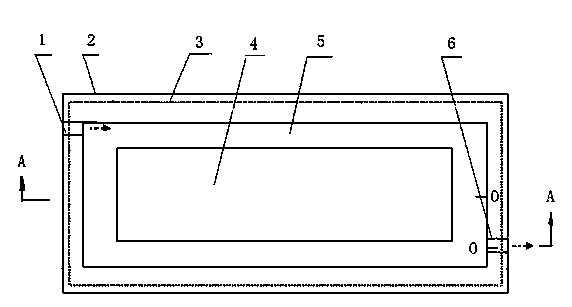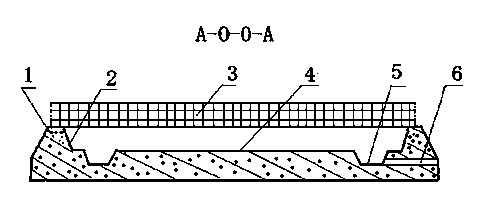Rice field ecological planting and breeding method
A technology of ecological planting and breeding and paddy field, applied in the fields of botanical equipment and methods, fish farming, rice cultivation, etc., can solve the problems of changes in the living and breeding environment of shrimp, low utilization rate of farmland, hidden dangers, etc., so as to maintain a stable living and breeding environment. , The effect of protecting the natural ecology and preventing pests and diseases
- Summary
- Abstract
- Description
- Claims
- Application Information
AI Technical Summary
Problems solved by technology
Method used
Image
Examples
Embodiment 1
[0032] Example 1: Such as figure 1 , 2 Shown is a basic embodiment of the invention. A rice field ecological planting method, which is a shrimp-rice co-cropping method in which Procambarus clarkii is cultured and rice planted in a circular manner in a rice field. The steps include: paddy field preparation, shrimp seed feeding, adult shrimp feeding, rice cultivation, paddy field Management and harvesting of adult shrimp, and retention of broodstock; the steps described are specifically:
[0033] A, paddy field preparation: include paddy field selection and construction, wherein paddy field ring ditch 5 is disinfected and planted grass after paddy field ring ditch 5 is completed;
[0034] B. Dropping of shrimp seeds: including the first throwing and subsequent retention of seedlings; when putting in, treat the shrimp seeds first, then evenly take points on the field surface 4, and finally put the shrimp seeds lightly into the shallow water area where the points are taken or ...
Embodiment 2
[0040] Embodiment 2, It is a further example. The difference from Example 1 is that the paddy field has sufficient water sources, no pollution to the water body, no drying up in the dry season, no flooding in the rainy season, good water retention performance, loamy soil, no silting of the bottom fertilizer, and irrigation Easy and convenient one-season rice paddy. The paddy field construction includes: excavating ring ditches 5 , heightening and widening field ridges 2 , improving water intake and drainage systems, and establishing anti-escape nets 3 . The annular ditch 5 is an annular ditch excavated along the inner side of the paddy field ridge 2 with a certain width and depth as a place for Procambarus clarkii to move, escape from the heat, avoid drought and forage; The outlets 6 are respectively located at both ends of the paddy field, wherein the water inlet 1 is on the ridge 2, and the outlet 6 is at the bottom of the ring ditch 5; the anti-escape equipment includes a...
Embodiment 3
[0041] Embodiment 3,It is a further embodiment, and different from Embodiment 2, taking the south of the Yellow River and the middle and lower reaches of the Yangtze River as an example: the shrimp species are released in three stages: the first stage is to release them from the market in March-April. Several kilograms of juvenile shrimps purchased directly from the Internet or artificially caught in the wild; the second price segment is to put broodstock shrimps in July to August, and put in a certain number of broodstock shrimps according to the number of shrimps per kilogram; the third stage During the first month to the last month after the mid-season rice is harvested, according to the specification that each one has a certain length as the shrimp, a certain number of artificially propagated shrimp seedlings are put in. The operation of adding shrimp seeds is as follows: first soak the shrimp seeds in rice field water, then lift them up and put them on hold, then soak th...
PUM
 Login to View More
Login to View More Abstract
Description
Claims
Application Information
 Login to View More
Login to View More - R&D
- Intellectual Property
- Life Sciences
- Materials
- Tech Scout
- Unparalleled Data Quality
- Higher Quality Content
- 60% Fewer Hallucinations
Browse by: Latest US Patents, China's latest patents, Technical Efficacy Thesaurus, Application Domain, Technology Topic, Popular Technical Reports.
© 2025 PatSnap. All rights reserved.Legal|Privacy policy|Modern Slavery Act Transparency Statement|Sitemap|About US| Contact US: help@patsnap.com


